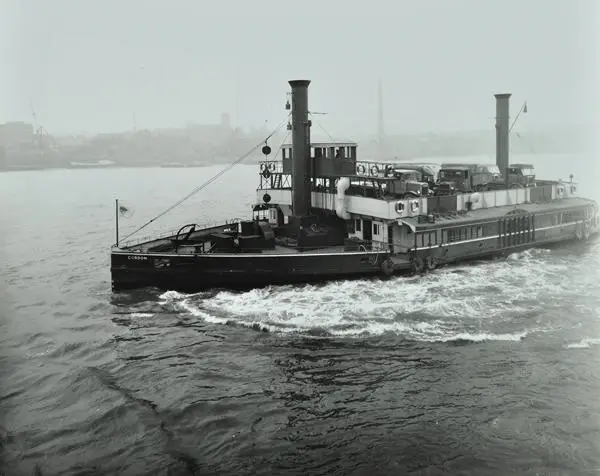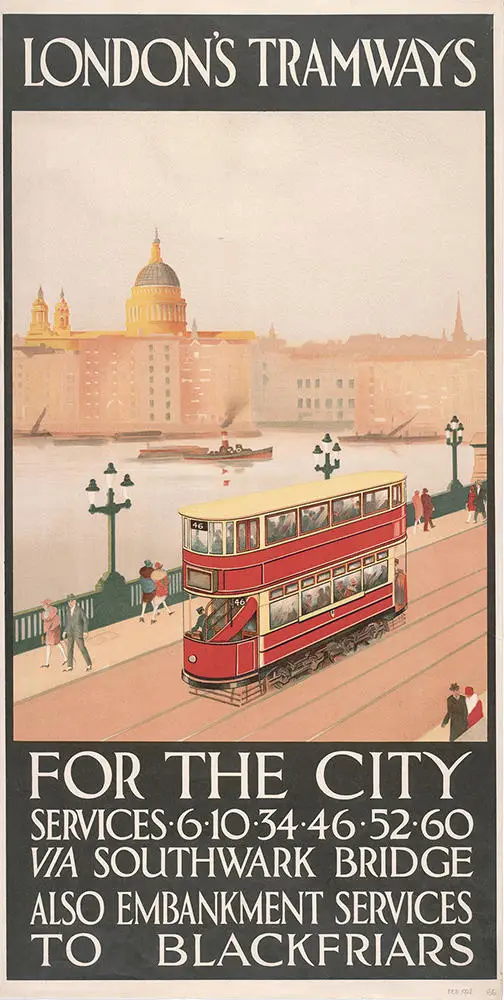Transport and highways
The records held at London Metropolitan Archives offer a fascinating insight into the development of the roads, rail and public transport infrastructure that exist in London today. Some of the public authorities represented within the archive have helped to shape what we know today. The records of the Greater London Council (GLC), the London County Council (LCC), Middlesex County Council (MCC) and the City of London Corporation contain swathes of records including details of planning, architectural and engineering reports, images and other documents. Predecessor bodies like the Metropolitan Board of Works (MBW) also contain similar details for specific projects.
River
The movement of goods and passengers along the River Thames has been central to the City of London's development. This trade has largely been controlled, since the sixteenth century, by the members of the Watermen and Lightermen's Company. The Company's records reflect its rich and diverse history. As well as court and committee minutes, financial records and letter books, there are records of the company's estates and charities, in particular its almshouses at Ditchling, Sussex and its former almshouses at Penge, Kent.
Further records relating to the Company of Watermen and Lightermen can be found the City archives (COL/CP/02 and COL/CC/17).

Roads
The early years of the LCC saw a continuation of the Victorian policy of road improvements in central London. Kingsway, linking the Strand with High Holborn, was one of the first great works to be completed in the twentieth century. There are numerous reports and vivid plans describing such schemes (LCC/CL/IMP). Other bold projects undertaken by the LCC, such as the building of Waterloo Bridge in the 1940s, and of the Hammersmith flyover a decade later, are recorded in detail (reference: LCC/CE).
Similarly the MCC undertook a range of major works projects. The development and management of roads, such as the North Circular, and bridges, like that at Twickenham, is fully documented in the archives (reference: MCC/HY).
The GLC inherited the highways responsibilities of the LCC and MCC. Its work, carried out on a larger scale, as perhaps more prosaic but had equal significance. Its involvement in the construction of the Westway and Rochester Way relief road, for example, contributed to dramatic improvements to the capital's transport infrastructure and is well represented in the records. These are classified according to departmental structure as it was on the eve of abolition. The papers of the transport and development departments have largely been fully catalogued and the relevant lists are available in the LMA Information Area (reference: GLC/TD).
Bridges
The City of London is responsible for some of the major bridges across the Thames. Records can be seen relating to Southwark Bridge (CLA/019), Tower Bridge (CLA/020), Blackfriars Bridge (CLA/021) and London Bridge (CLA/022).

Public Transport
During the early part of the 20th century the LCC ran many of the tramlines and associated electricity generation in and around the County of London as it existed at the time (Ref. LCC/TWYS).
In 1929 the London County Council tramways, the Underground railways and the London General Omnibus Company proposed to coordinate their services, and in 1933 the London Passenger Transport Board, commonly known as London Transport was established. Many of the records of London Transport are with Transport for London, but records of some predecessor companies such as the Metropolitan Railway Company (See LMA/4029, ACC/1297 and ACC/1307) and early London Transport Board Minutes at LMA.
From 1969 the GLC was responsible for managing London's public transport system, and policies on Tube and bus provision feature in the transportation and development department records. The removal of this function in 1984 was part of the sequence of events that led ultimately to abolition.